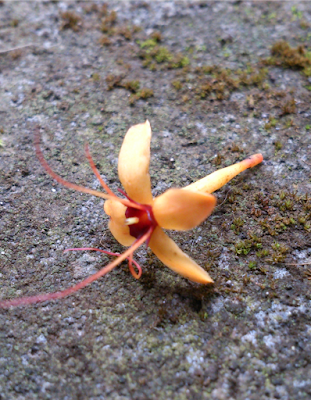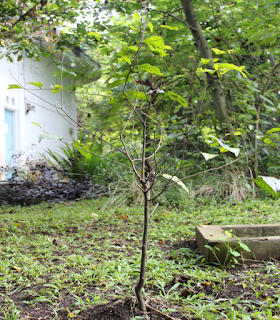Saraca thaipingensis Cantley ex King.
Saraca thaipingensis Cantley tree
(Hidayat & Abdurrahman, 2017)
Saraca thaipingensis Cantley Pod
(Hidayat & Abdurrahman, 2017)
Saraca thaipingensis Cantley Inflorence
(Hidayat & Abdurrahman, 2017)
Saraca thaipingensis Cantley flower
(Hidayat & Abdurrahman, 2017)
Regnum : Plantae – Plants
Subregnum : Tracheobionta – Vascular plants
Divisio : Magnoliophyta – Flowering plants
Classis : Magnoliopsida – Dicotyledons
Subclassis : Rosidae
Ordo : Fabales
Familia : Fabaceae – Pea family
Genus : Saraca
Species : Saraca thaipingensis Cantley ex King.
Description
Location : Zone 3, UPI Botanical Garden
Please cite this article as:
Azis, A. M. (2019). UPI Seed Plants: Saraca thaipingensis Cantley ex King. Online at
https://upiseedplants-one-aldi.blogspot.com/. Accessed (Date)
Description
This medium sized tree , evergreen tree with a wide-spreading crown grows to a height of 7 m or more.The distribution is among peninsular and asia or tropical area.
Leaves are simple pinnate, large, with up to 8 pairs of opposite, 20-40 x 6-12 cm leaflets but without a terminal one. Young leaves are cream-coloured, hanging limply in tassels for a few days before they stiffen and turn green (Flora Malesiana, 2019).
Inflorence could appear in the rod, flowers 1-2 cm across, faintly fragrant, in dense bunches that arise from the trunk and main branches. They are light pinkish yellow turning deep yellow with a dark crimson eye spot which darkens to blood-red. Most of the flowers in a cluster are functionally male, the others bisexual.
Pods are large, 30-45 x 6-10 cm, thin, flat and leathery. They turn purple with maturity, splitting into two coiled halves to expose the flat, black seeds.
Saraca thaipingensis Cantley or yellow saaca have medical function as antioxidant and anti microbial.
Location : Zone 3, UPI Botanical Garden
Please cite this article as:
Azis, A. M. (2019). UPI Seed Plants: Saraca thaipingensis Cantley ex King. Online at
https://upiseedplants-one-aldi.blogspot.com/. Accessed (Date)








Comments
Post a Comment